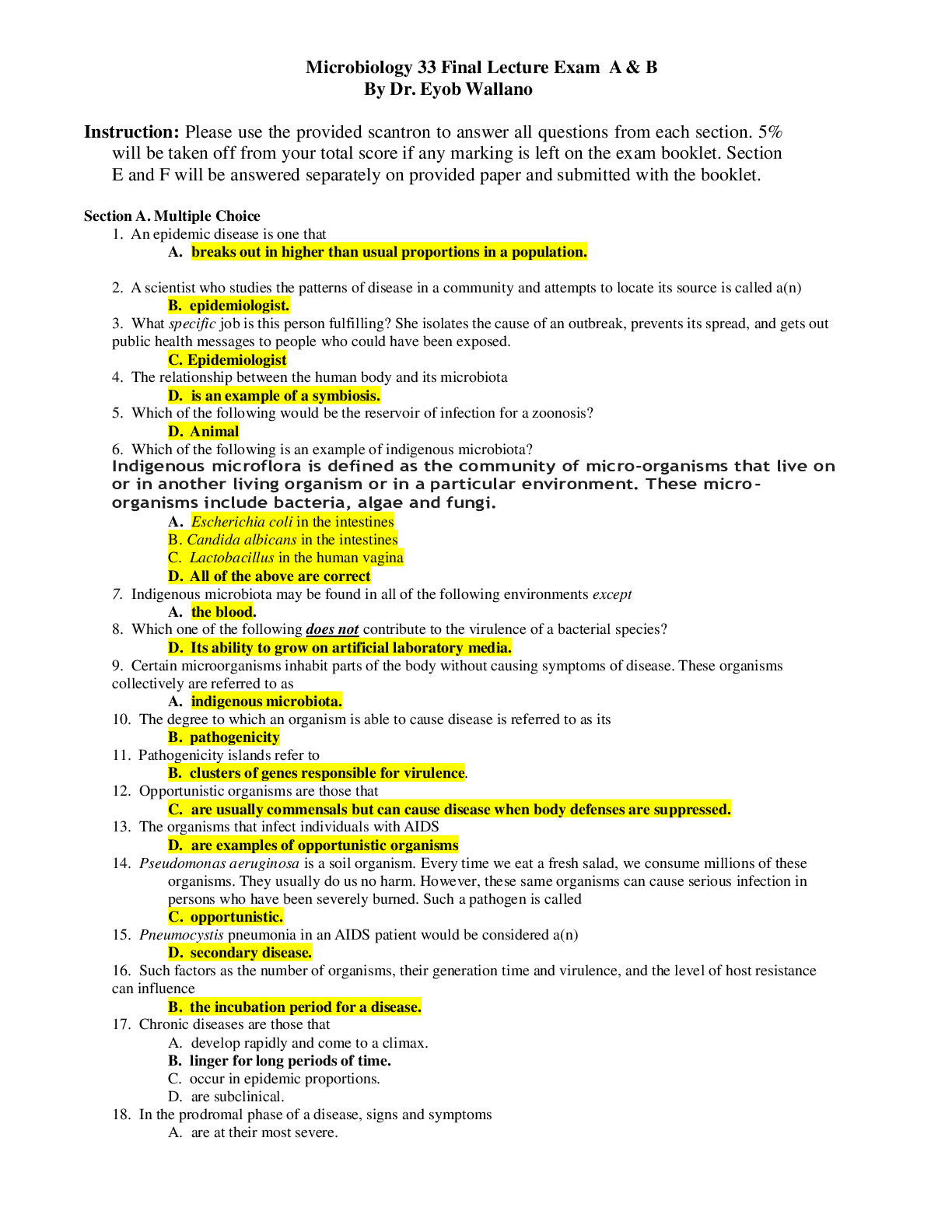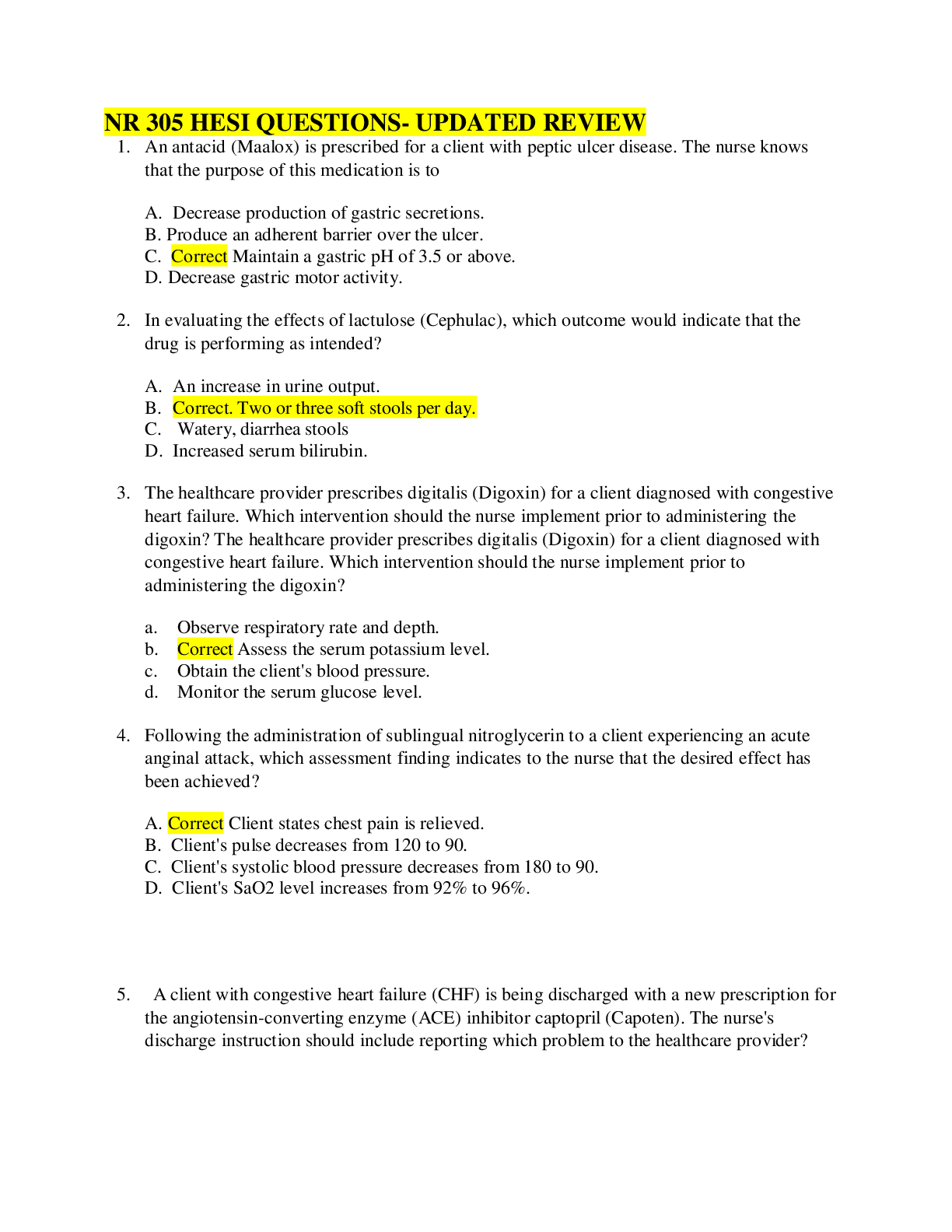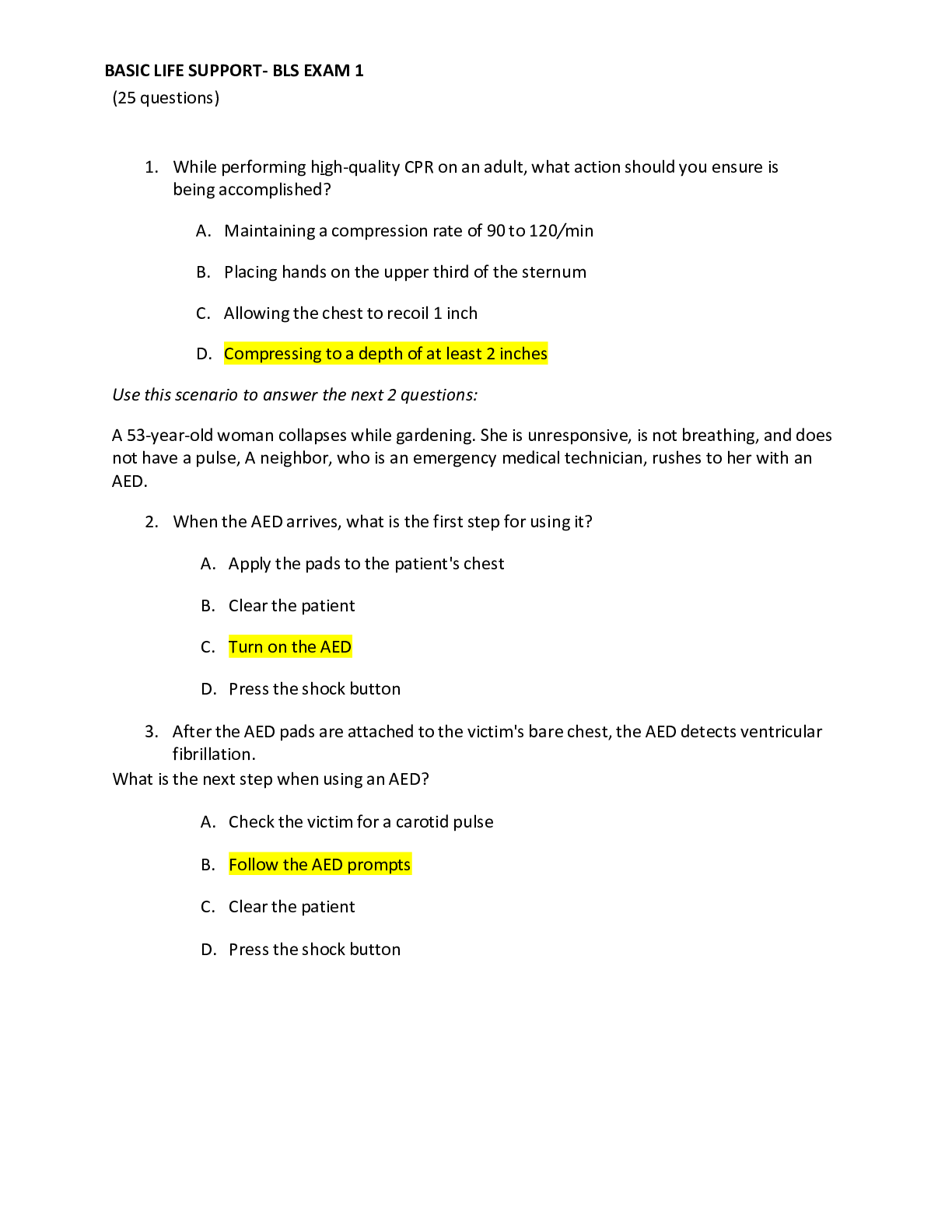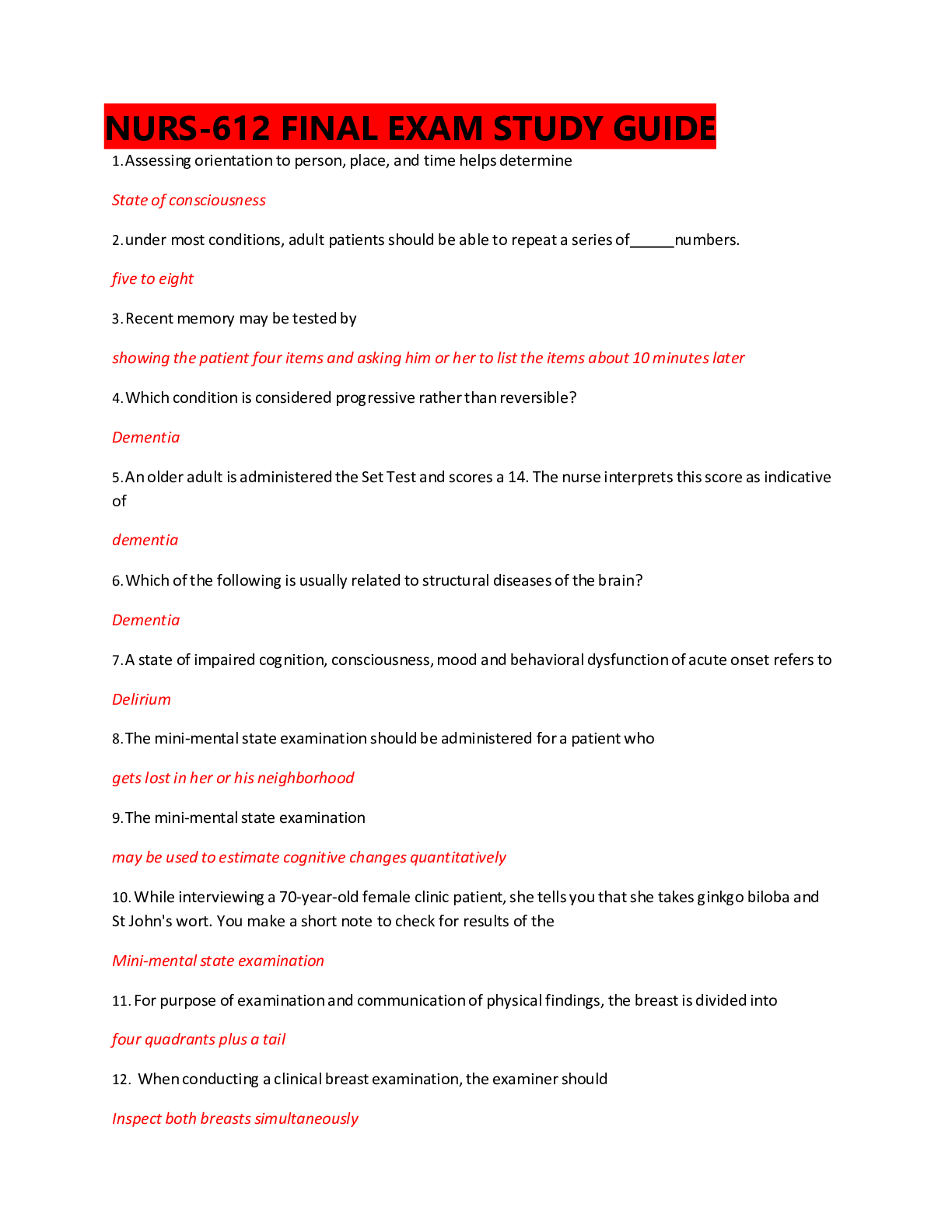Education > STUDY GUIDE > NCC Electronic Fetal Monitoring Certification correctly answered 2023 (All)
NCC Electronic Fetal Monitoring Certification correctly answered 2023
Document Content and Description Below
Which of the following factors can have a negative effect on uterine blood flow? a. Hypertension b. Epidural c. Hemorrhage d. Diabetes e. All of the above - (correct ans)e. All of the above Ho... w does the fetus compensate for decreased maternal circulating volume? a. Increases cardiac output by increasing stroke volume. b. Increases cardiac output by increasing it's heart rate. c. Increases cardiac output by increasing fetal movement. - (correct ans)b. Increases cardiac output by increasing it's heart rate. Stimulating the vagus nerve typically produces: a. A decrease in the heart rate b. An increase in the heart rate c. An increase in stroke volume d. No change - (correct ans)a. A decrease in the heart rate What initially causes a chemoreceptor response? a. Epidurals b. Supine maternal position c. Increased CO2 levels d. Decreased O2 levels e. A & C f. A & B g. C & D - (correct ans)g. C & D The vagus nerve begins maturation 26 to 28 weeks. Its dominance results in what effect to the FHR baseline? a. Increases baseline b. Decreases baseline - (correct ans)b. Decreases baseline T/F: Oxygen exchange in the placenta takes place in the intervillous space. - (correct ans)True T/F: The parasympathetic nervous system is a cardioaccelerator. - (correct ans)False T/F: Baroreceptors are stretch receptors which respond to increases or decreases in blood pressure. - (correct ans)True T/F: There are two electronic fetal monitoring methods of obtaining the fetal heart rate: the ultrasound transducer and the fetal spiral electrode. - (correct ans)True T/F: Variability can be determined with the fetoscope. - (correct ans)False T/F: Because the ultrasound transducer and toco transducer are sealed units, they can be dipped in warm water to make cleaning easier. - (correct ans)False T/F: The most common artifact with the ultrasound transducer system for fetal heart rate is increased variability. - (correct ans)True T/F: All fetal monitors contain a logic system designed to reject artifact. - (correct ans)True T/F: The monitor should always be tested before starting a tracing, either external or internal mode and labeled a test. - (correct ans)True T/F: The paper speed on the fetal monitor should always be set at 1cm/min. - (correct ans)False T/F: Both internal and external monitoring methods are equally accurate means of obtaining the fetal heart rate and contraction patterns. - (correct ans)False T/F: The external toco is usually placed over the uterine fundus to pick up contractions. - (correct ans)True T/F: The external toco gives measurable uterine pressure. - (correct ans)False T/F: The fetal spiral electrode can be placed when vaginal bleeding of unknown origin is present. - (correct ans)False T/F: The ultrasound transducer is usually placed on the side of the uterus over the baby's back, as the fetal heart is heard best there. - (correct ans)True T/F: The spiral electrode is used to more accurately determine the frequency, duration, and intensity of uterine contractions. - (correct ans)False T/F: The heart rate from a well-applied fetal spiral electrode can only be fetal, not maternal. - (correct ans)False T/F: The intrauterine catheter is used to pick up the fetal heart rate. - (correct ans)False T/F: The internal spiral electrode may pick up the maternal heart rate if the baby has died. - (correct ans)True T/F: Fetal arrhythmias can be seen on both internal and external monitor tracings. - (correct ans)True T/F: Variability and periodic changes can be detected with both internal and external monitoring. - (correct ans)True T/F: Variable decelerations are a result of cord compression. - (correct ans)True T/F: The presence of FHR accelerations in the intrapartum and antepartum periods is a sign of adequate fetal oxygenation. - (correct ans)True T/F: Variable decelerations are a vagal response. - (correct ans)True T/F: Late decelerations have a gradual decrease in FHR (onset to nadir 30 seconds) and are delayed in timing with the nadir of the deceleration occurring after the peak of the contraction. - (correct ans)True T/F: The fetal heart rate baseline can be determined during periods of marked variability. - (correct ans)False T/F: Anything that affects maternal blood flow (cardiac output) can affect the blood flow through the placenta. - (correct ans)True T/F: Variable decelerations are the most frequently seen fetal heart rate deceleration pattern in labor. - (correct ans)True T/F: Minimal variability is always an indicator of hypoxia and a Cesarean section is indicated. - (correct ans)False What is your first intervention in management of a patient experiencing variable decelerations? a. Immediate delivery b. Change maternal position c. No treatment indicated d. Oxygen e. Stop oxytocin infusion - (correct ans)b. Change maternal position Etiology of a baseline FHR of 165bpm occurring for the last hour can be: 1. Maternal supine hypotension 2. Maternal fever 3. Maternal dehydration 4. Unknown a. 1 and 2 b. 1, 2 and 3 c. 2, 3 and 4 - (correct ans)c. 2, 3 and 4 CONTINUED,.............DOWNLOAD FOR BEST SCORES [Show More]
Last updated: 2 years ago
Preview 1 out of 75 pages

Buy this document to get the full access instantly
Instant Download Access after purchase
Buy NowInstant download
We Accept:

Reviews( 0 )
$10.00
Can't find what you want? Try our AI powered Search
Document information
Connected school, study & course
About the document
Uploaded On
Jan 24, 2023
Number of pages
75
Written in
Additional information
This document has been written for:
Uploaded
Jan 24, 2023
Downloads
0
Views
76
















